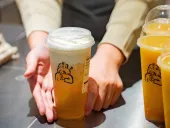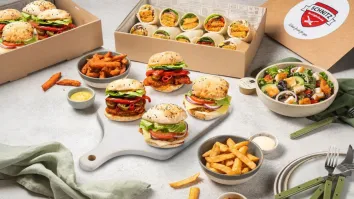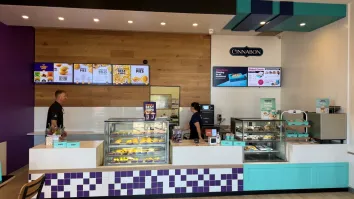How contactless payments are transforming quick service restaurants
By Michel van AaltenOver the past year, contactless payments have played a critical role in helping the restaurant industry maintain hygienic and secure operations. Now, more than ever, consumers want the pleasure of making a purchase without any safety concerns. What’s more, they expect businesses to meet the hygiene and security standards mandated by their governments, and to act with agility as rules change.
As Australia moves through the pandemic, contactless payments in the quick service restaurant (QSR) sector are evolving to meet these changing expectations. Over the course of a year, digital and contact-free solutions have become engrained in consumer purchasing behaviours across Australia. A real opportunity exists for QSRs to leverage these technologies to offer more seamless and secure experiences for customers at every point of their journey – whether that’s in-restaurant, in-app or online.
Card-happy customers
Accelerated by the COVID-19 pandemic, cashless payments and digital wallets are now leading as the payment channel of choice with its frictionless payment solutions. A swathe of new payment options like QR codes, payment links, Buy Now Pay Later (BNPL) and in-app ordering options are being deployed by restaurants to help customers to keep their distance while improving previous ordering experiences. Similarly, more consumers are selecting tap-n-go and digital wallets to avoid paying with cash when purchasing goods.
According to Adyen’s Agility Report, Australians are among the biggest advocates for encouraging social distancing and hygiene in restaurants. Research within the report found 50 per cent of Australians are concerned about the hygiene of payment terminals. Meanwhile, 27 per cent say that restaurants should do everything they can to introduce contact-free ways to pay. Just over a half (55 per cent) say that proximity is their main concern when visiting bars and restaurants, while only 28 per cent say they’ll be dining out less following the pandemic.
Some QSRs have used the impact of the pandemic to future proof their operations with a range of convenient, cashless payment methods. Grill’d, for example, expanded from offering point of sale and in-app payments, to its own Grill’d delivery platform, online Relish rewards program, and the introduction of Order at Table for instore customers. Diners in the company’s pilot phase were incredibly positive about the experience. Where it used to be about separately defined online and instore experiences, Grill’d is now giving its customers the best of both worlds and delivering a seamless cross-channel experience.
Securing customer data
As QSRs transform and offer payment options that ensure hygiene and social distancing protocols, it is essential to implement secure ways of storing and processing customer data. ‘Tokenisation’ – the process of replacing sensitive data with non-sensitive data, can help with this.
Tokenisation is one of the most effective and secure technologies for serving, processing, and securing customer payments remotely. In payments, it is used to safeguard a card’s primary account number (PAN) by replacing it with a unique string of numbers, attributed to that card only.
Payment tokenisation helps QSRs get to know their customers better. It provides a single unified view of shopper behaviour, attributed to their unique account number, across all channels and any sub brands. It’s a great way to secure customer loyalty by creating more familiar brand interactions across platforms; for example, recognising a diner that bought takeaway online last week, has come in-store to eat this week, and has uploaded their card details to the QSR’s app, and serving them unique offers based on their meal preferences.
With tokenisation, the customer’s payment process is dramatically simplified to a one-click, or limited click checkout, while adding an extra layer of security and privacy for the purchaser. This increases conversion at the checkout stage and means merchants don’t have to store sensitive card data in-house.
The ability to buy from multiple channels without friction is what diners want in this new normal. They don’t want to look for their card or cash when they can pay using something they’re already holding. Similarly, it needs to be as easy online and in-store, with greater recognition of the customer, no matter which channel they are buying from.
Across 2020, Hungry Jack’s worked with Adyen to upgrade its Point of Sale (POS) terminals, unify its sales channels, and tokenise the secure card data being collected. As a result of this, Hungry Jack’s can now recognise when a customer uses the same payment method in-store as they’ve used online or through the Hungry Jack’s app, without the use of a loyalty card. Hungry Jack’s is also exploring the rich insights it is gathering from its customer payment data and the trends which are emerging – all of which helps it identify customer behaviours across different locations, channels, and times of day.
QSRs around the world have faced huge challenges and fought hard to survive against difficult odds. Now, as we navigate this new normal - where contactless payments are the preferred method of choice - there is an ongoing need to innovate and integrate new technologies to serve customers in the best ways possible. Payment options that are designed with hygiene and security in mind, and which help QSRs recognise customers across channels, play a key role in driving such transformation.























